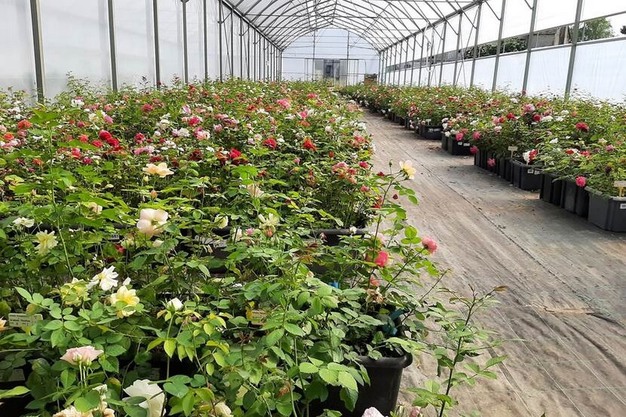Last summer the climate change consequences were visible on almost all fields across Serbia. Although not as obvious, extremely high temperatures also cause significant problems in covered production. Due to extremely high outside temperatures, plants need to be regularly cooled. Diseases and pests that were not present in Serbia a decade ago are appearing more frequently.
"Due to climate change, we will have to change the types of greenhouses because it will be very difficult to maintain production in the existing ones. The temperature inside a greenhouse is 15–20 degrees higher than outside, so shading is mandatory. This involves high costs. Additionally, we will have to implement automatic irrigation systems to water and cool the plants more frequently," says farmer Sabolč Čikoš.
 © Zoltán Szászi
© Zoltán Szászi
He adds that with the increase in average temperatures, pests are attacking plants earlier, and new species have emerged that did not exist in this region fifteen years ago. Farmers say that ten years ago, thrips and mites were present, but in much smaller numbers than today.
"Winters are mild, and these pests survive in the soil. As soon as temperatures rise, they start multiplying, and they are difficult to control. The plant protection products we use are effective, but the problem is that insects reproduce much faster now. For example, ten years ago, we had five generations of certain insects per season, and now we see up to ten generations in a single summer," Čikoš explains for national broadcaster RTS.
Experts confirm that greenhouse production has been facing increasing challenges in recent years. If this trend continues, growers will have to implement measures to prevent greenhouse overheating and reduce the time between irrigation cycles. Additionally, a different approach to nutrient application will be necessary due to the accelerated plant growth phases, as well as improved disease and pest control methods.
"When selecting pesticides, farmer should consider the short ripening period of crops. Therefore, we recommend integrated protection using pesticides with a short pre-harvest interval or biological products, along with the use of traps," says Snezana Paradjenovic from the Forecasting and Reporting Service (PIS) in Zrenjanin.
Source: Agroberichten Buitenland
